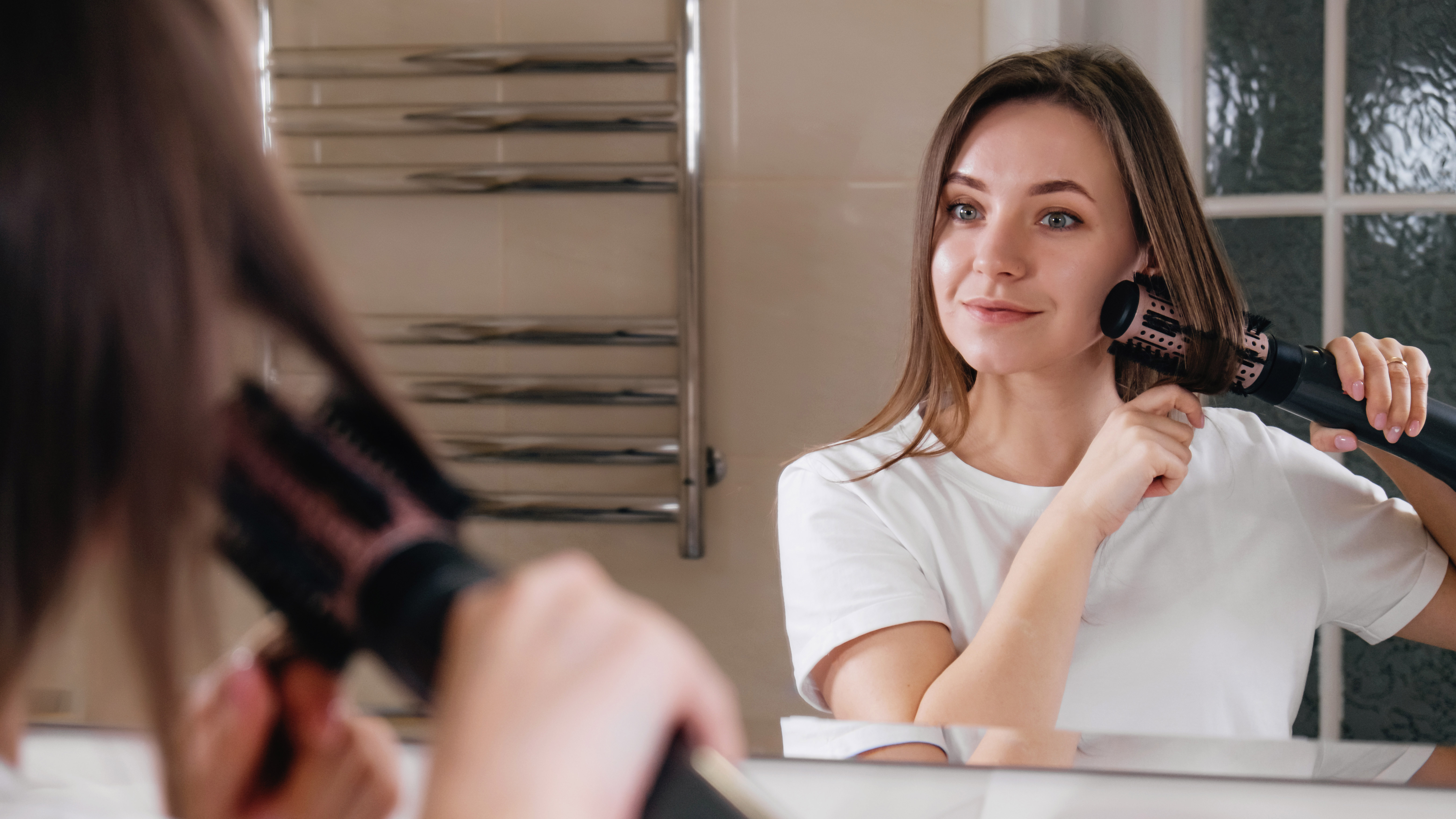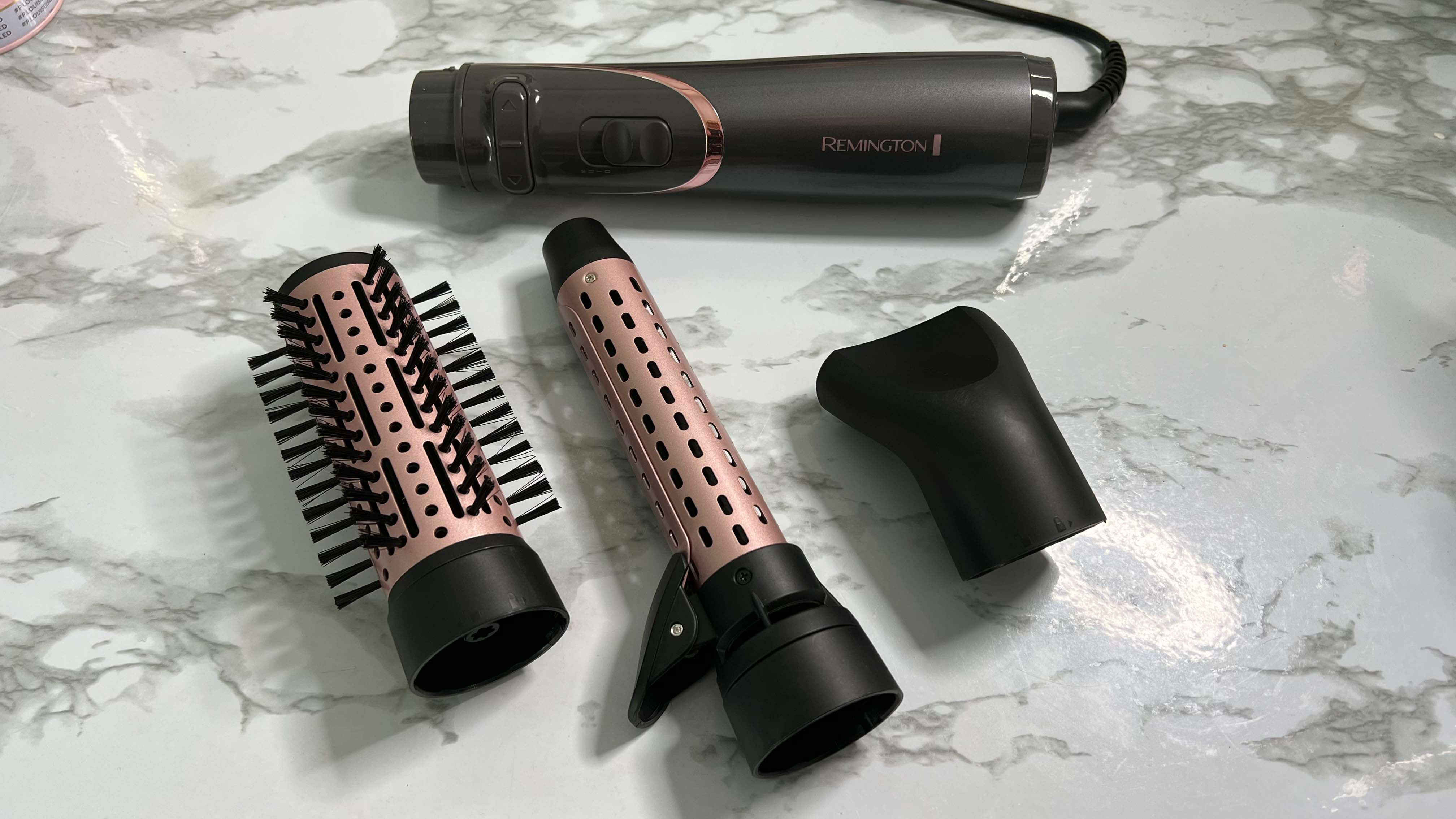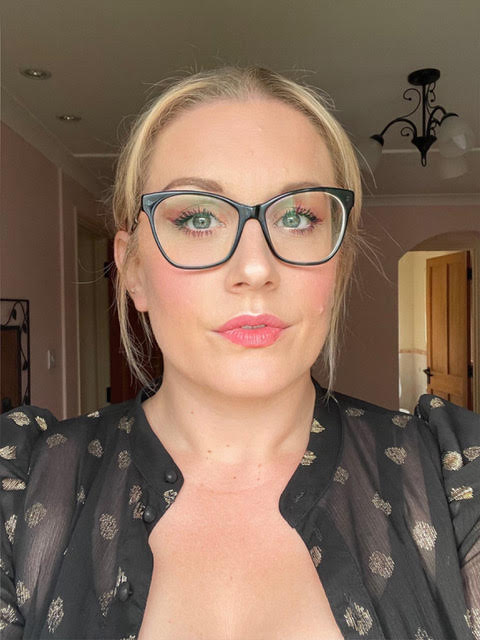I tried this affordable Dyson Airwrap alternative and I can’t ever go back
This Remington appliance changed my mind about hot air stylers

There are few hair stylers that divide opinion as much as the Dyson Airwrap. At a whopping $549 / £449.99, fans will say the price tag is more than worth it, critics call it a waste.
I’ve tried, and failed, many times to master the effortless curls that adverts and influencers seem to achieve with the Dyson Airwrap (2022). Given the sheer number of tutorials on TikTok and YouTube, it’s not just me, it’s clearly not the easiest tool to master.
However, Dyson’s hot air styler remains difficult to get hold of, often selling out as soon as it comes back in stock. If you fall into this camp, then check out our article where to buy the Dyson Airwrap (and even the best Dyson Airwrap Black Friday deals) to give yourself the best possible chance of getting your hands on one.
I’ve come to the realization that my mid-length, flat and graying hair maybe just isn’t suited to the Dyson trend. That was, however, until I discovered the Remington Curl and Straight Confidence Airstyler. For $80 / £60 – a mere drop in the Dyson ocean – this styler, which is called the Remington Pro Rotating Hot Air Styler in the US, has a remarkably similar rotating barrel that blasts out hot air. It comes with a similar soft bristle hot air brush attachment, a hot paddle brush attachment, and a concentrator nozzle. All housed within a carry case. Just like Dyson’s styler.
On paper, the Remington Airstyler looks like a great, almost too-good-to-be-true dupe for the Airwrap – but can it really help me get the on-trend Airwrap-esque curls without hours of practice for such a cheap price?
Best hair air styler deals
Read on to find out how the Remington Curl and Straight Confidence Airstyler compares to the Dyson Airwrap. Alternatively, check out the prices we've found for some of the best hot air stylers right now.
The Coanda effect
The reason Dyson products, and particularly those in its haircare range, tend to sell for such vast sums is because of the innovative use of technology used in each. In the case of the Dyson Airwrap, this innovation takes advantage of what’s known as the Coanda effect.
Sign up for breaking news, reviews, opinion, top tech deals, and more.
To get technical for a second, the Coanda effect is produced when a fast-moving jet of air – or flow of water – clings to the surface of whatever it’s traveling over. The effect is seen when wind blasts air over the wings on a plane, or as an F1 car drives at high-speeds in a wind tunnel.
In the case of the Airwrap, Dyson designed a curling barrel that contains six slots. Each slot multiples the flow of air, powered by the built-in motor to create a vortex of air surrounding the barrel. This vortex is what pulls the hair towards it and keeps it attached to the surface of the barrel in order to create the tension needed for the curls. You can then rotate this barrel towards or away from your head to create different looks. This video shows it in practice
Instead of using this Coanda effect, the Remington styler has a barrel that more closely resembles that of a standard hair tong. A hinged clip secures each strand of hair to the barrel.
Large slots positioned across this barrel blast out hot air, and a dual button on the handle of the styler is used to manually rotate the barrel in the desired direction. You can either curl the hair clockwise, or anticlockwise and the direction you choose will depend on what finish you want.

Using Remington’s Dyson Airwrap dupe
After washing my hair, I clipped the paddle brush attachment to the Remington styler, and selected the lowest heat setting, from a choice of three. These settings are low, high or a cool shot option.
I ran the brush through sections of my hair to remove the bulk of the water and smooth the cuticle until my hair was about 80% dry. This meant that it looked dry but was slightly cold and damp to the touch.
From here, I removed the paddle brush and clipped the curling barrel to the styler's handle. I divided my hair into four sections – two underneath, and two on top – with sectioning clips and began curling from the rear to the front.
Within each section, I separated out thinner strips of hair (around two to three fingers in width) and gripped the very ends of these strips using the hinged tong clip. I then turned the styler on and rotated the barrel of hot air towards my head. For my first few attempts I used the low heat setting but it didn’t seem to create curls that would hold. When I went back over them on the higher heat setting, the result was much more impactful.
I repeated this by going in alternate directions. For the first curl I rotated the barrel inwards, for the next I rotated it outwards and so on around the rest of my hair. By alternating directions, it creates more natural-looking curls even after you’ve brushed them out. If you want to create more uniform waves, try rotating all the curls in the same direction, letting them cool and then brushing them out.
Even on our first attempt, we achieved volume and bounce that has typically eluded us with the Dyson. The curls weren’t quite as uniform or as neat as they are when we use straighteners or a traditional curl tong, but our hair felt noticeably softer. Plus, we didn’t have to subject it to extreme heat.
On our second attempt, we created bigger curls and these curls lasted for hours but we still found ourselves experimenting with how to hold and use the styler.
For example, when the barrel is positioned facing north with the hinged tong at the bottom, the hot air blows up. This left my hair full of volume. However, it also caused flyaway hairs to also blow upwards, thus adding a somewhat frizzy and fluffy finish. This is also a problem I have faced with the Dyson Airwrap.
It is possible to position the styler facing south, with the hinged clip at the top. You can still grab the hair at the end and rotate it towards your face, but in this instance, the hot air blows the hair down. The overall finish is smoother, but you do sacrifice some volume.
All things considered, I prefer the volumised, softer curls with the barrel facing upwards. Even if it means applying a hair serum and spray to control the fluff. It is also easier to use the styler in this position.
By the third use, I feel like I’d nailed the look I was after and loved the finish I created. Large, bouncy curls that lasted hours, with minimal damage and which left my hair feeling soft and full of movement.

Bouncy blow dries
One attachment I do love on the Dyson, and which is equally great on the Remington styler is the bristle brush. If you want to create a bouncy blow dry, rather than a head of curls and waves, both help mimic the technique used by hair stylists in salons. The Remington styler particularly so.
Clipping the brush onto the styler, placing it at the ends and rotating it up and down allows you to add volume and smoothness in a single step. It’s not too dissimilar to how the Revlon One Step Dryer and Volumiser hot brush works, but the use of the rotating feature adds even more bounce with the Remington.
The brush size is larger on the Remington, compared to the Dyson, which would lend itself best to people with longer hair. I loved the overall finish and volume it gave my shorter hair, but it might be too much for some people with similar length locks.
There is a catch – or two
The addition of the hinged tong clip makes the Remington styler much easier to control than the Dyson Airwrap and gave me more versatility over my finished look. However, it’s not without its problems.
The entire circumference of the barrel is large. Even for my hands, which I consider to be on the bigger side. For all the manual control the Remington’s hinged clip gives, unless you grab the very ends of the hair and wrap them around the barrel first, you’re left with kinks at the bottom. These kinks become even more apparent if your hair is too wet.
It’s also worth noting that the barrel rotates quickly. If you press and hold the rotation button, you may end up pulling the hair too tightly at the roots. I now prefer to press and release two or three times, to give me both control over this speed but also the tension it creates. Tighter tension results in tighter curls. Looser tension results in softer curls.
So, is the Remington a worthy Dyson Airwrap dupe?
Despite me finding a number of faults with the Remington styler, it’s most definitely a worthy dupe for the Dyson Airwrap. Each of these relatively small complaints are, in my view, worthwhile sacrifices to make for the vast difference in price.
The styler is chunky, but it’s not as long as the Dyson. This means that its carry case and attachments are more compact, which makes the Remington a better option when traveling. The Remington styler helps create a range of versatile looks, and while it’s not as easy to use out of the box as I had hoped, it took much less practice to master. All without ever having to seek out tutorials.
The Dyson does have its plus points. Its technology is designed to provide the most protection for your hair and, over time, the Dyson left my hair in better condition. It comes with a greater number of attachments too, including barrels of different sizes to suit different hair styles and looks. One of these attachments, the hair drying nozzle, effectively turns the Airwrap into a Dyson Supersonic dryer meaning you effectively get two Dyson products for the price of one.
Yet even with all of these benefits, the Dyson Airwrap is too hit-and-miss for my liking. Especially given its price. Paying $80 / £60 for the Remington styler is a much easier pill to swallow for a much easier tool to use.
- You also might want to check out our Dyson Airwrap review
- Dyson Airwrap vs Airwrap i.d.: how does the newest version compare?

Victoria Woollaston-Webber is a freelance journalist, editor, and founder of science-led health, beauty, and grooming sites, mamabella and MBman. She has more than a decade of experience in both online and print journalism, having written about tech and gadgets since day one for national papers, magazines, and global brands. Victoria specializes in beauty gadgets, as well as small appliances including vacuum cleaners, air fryers, blenders, and mixers, plus all things baby and toddler. When she’s not testing the latest must-have beauty product, she loves Lego Architecture, murder mysteries, and chasing after her four-year-old.